The use of wind power, specifically wind turbines, to generate electricity is a dominating interest in renewable energy. Moreover, the relocation of wind turbines offshore is of growing importance as these locations are less constrained by land availability and will enable use of larger rotor diameter turbines, which ultimately decreases the cost of energy.
As the size and operational envelope of wind turbines has increased, so has the difficulty of full-scale testing and optimization. Physical limitations prevent engineers from testing device-scaled technologies experimentally in wind tunnels at operating conditions. Computational analysis allows engineers to predict wind turbine performance, reducing the amount of costly physical testing that must be performed on-site or in a wind tunnel.
Illinois Rocstar is developing computational prediction models to enable more efficient and effective wind turbines to be built, ensuring an increase in energy capture. A key part of this analysis is modeling the two-way coupling of fluid dynamics and structural mechanics accurately, a problem known as fluid-structure interaction (FSI). Figure 1 shows the significant deformation of wind turbine blades that can occur during operation. Deformation of the blade affects the fluid flow, which in turn affects the deformation. Without FSI, the existence and consequences of such multiphysics flow phenomena cannot be simulated.
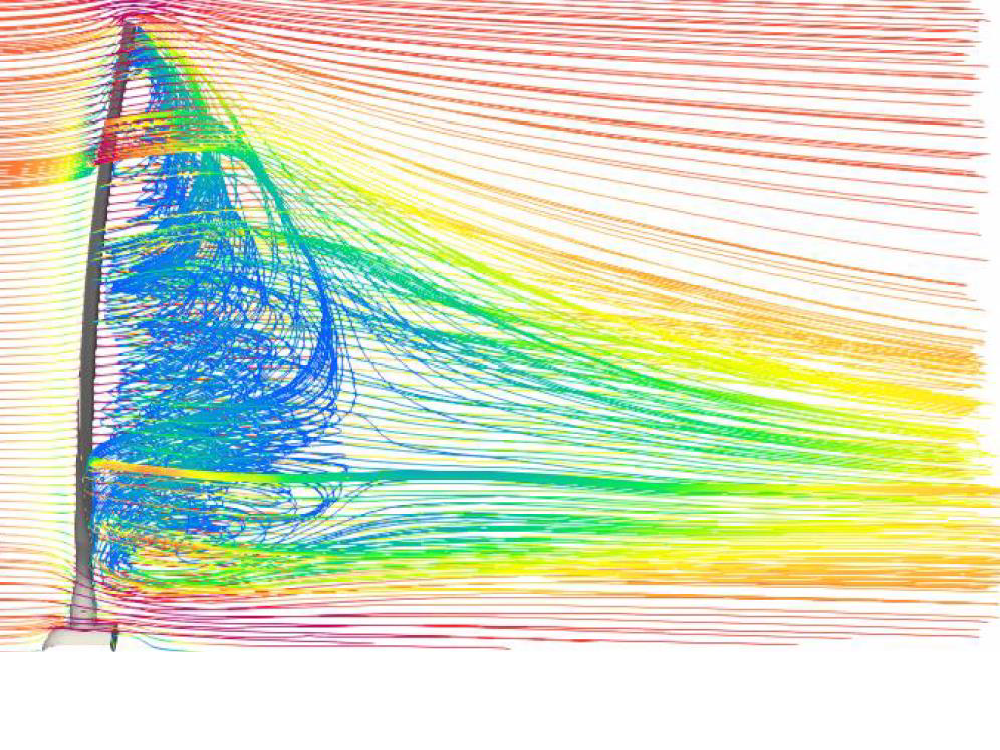
Scientists and engineers at Illinois Rocstar have developed and deployed Rocstar Multiphysics™ to solve FSI problems. Rocstar Multiphysics™ is a simulation software with capabilities well-suited for the renewable energy sector. Implemented with an open source license, the software suite brings together tools for mesh generation, computational structural mechanics, computational fluid dynamics and more, enabling users to mix and match simulation codes for different physical domains to suit a wide range of engineering applications.
Rocstar Multiphysics™ was used in a case study to simulate FSI in a single wind turbine blade in 3D using geometry and boundary conditions adapted from an experimental study conducted by the US DOE National Renewable Energy Laboratory (NREL). A computational model for the 5-meter-long blade was constructed from tapered and twisted profiles of the NREL S809 airfoil. Meshes were generated for both the solid and fluid regions shown in Figures 2 and 3, with special constraints to ensure congruence on the FSI interface.
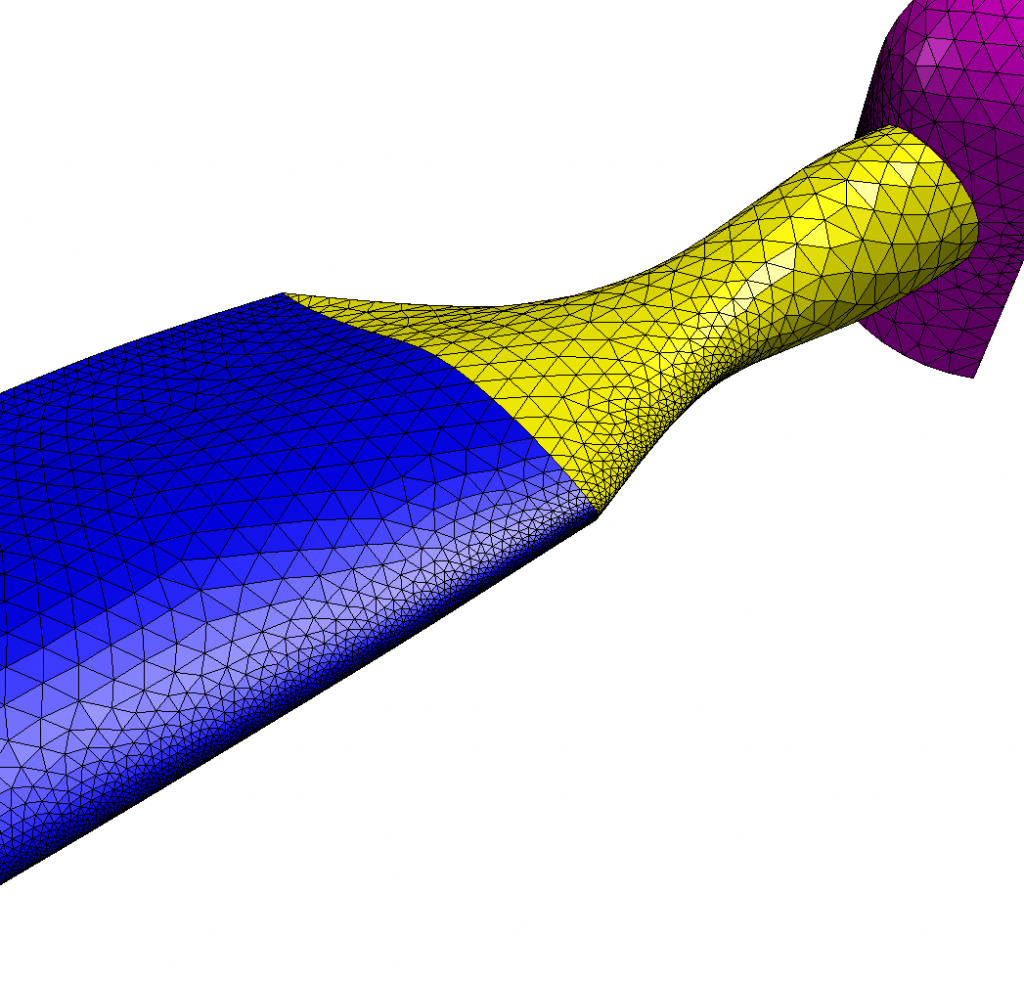
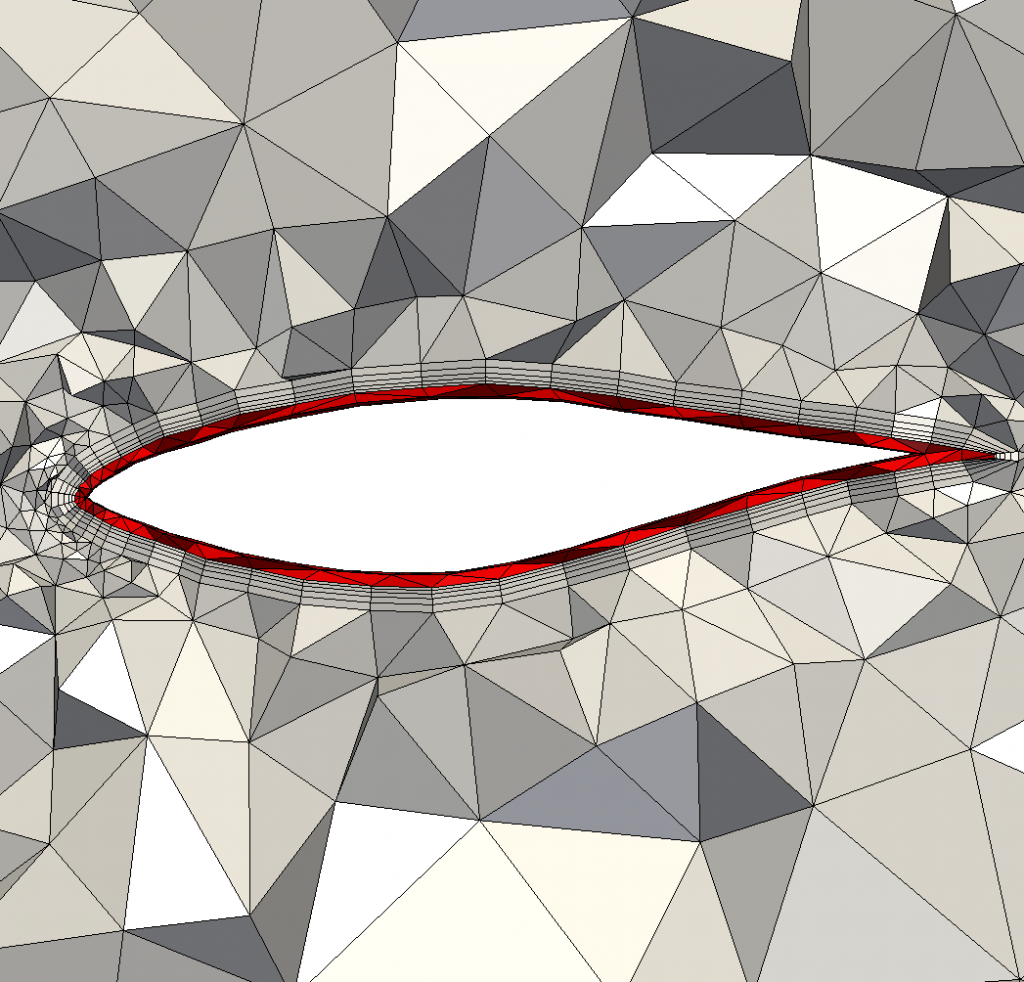
Rocstar Multiphysics™ begins with an increment of the solid solver, which computes deformations in the solid region, Figure 4. This information is passed to the fluid solver and used to update the mesh, ensuring conformity at the FSI interface (the blade surface). The fluid solver then increments on the newly deformed mesh to compute the flow field in the fluid region (Figure 5, Left). Aerodynamic forces on the FSI interface are extracted from the flow field solution and passed back to the solid solver in the form of traction boundary conditions (Figure 5, Right). The entire process then repeats, with the solid solver using the updated boundary conditions (Figure 3).

Figure 4. Structural stresses on the S809 wind turbine blade computed by the Rocstar Multiphysics™ solid solver. Maximum stress is exhibited at the leading edge of the hollow blade. Chord-wise variations in stress cause the blade to twist, affecting airflow and power generation.
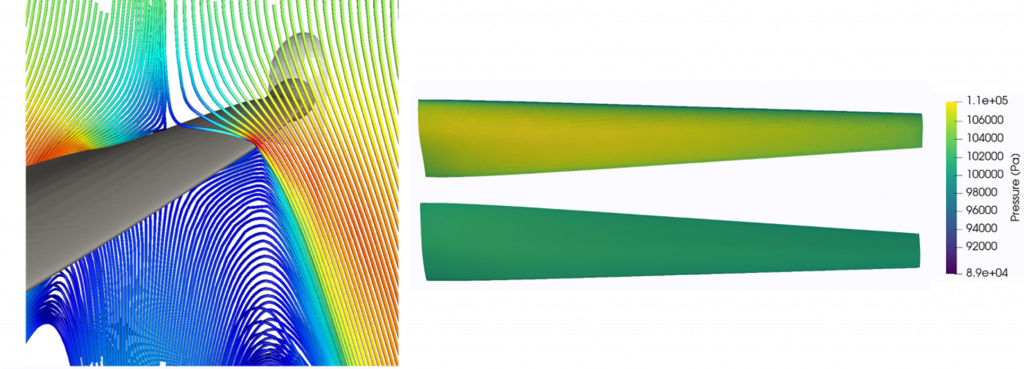
In a complementary case study, Illinois Rocstar engineers performed a computational fluid dynamics simulation of the entire wind turbine, using a rotating mesh to model the rotation of the blades. Figure 6 presents the fluid-only simulation, showing the turbulent structures developed by the rotating blades and their interaction with the stationary tower.
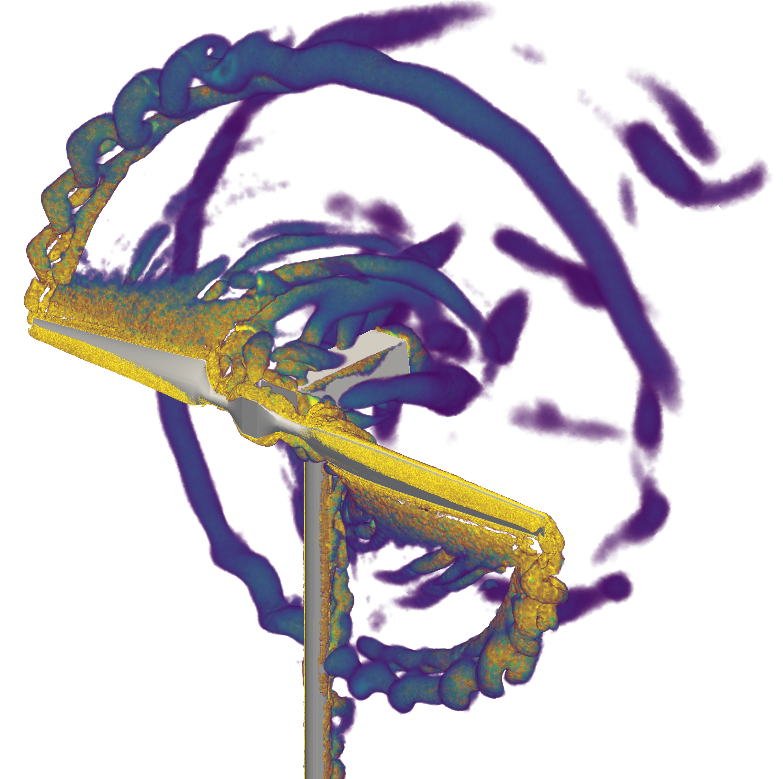
A notable technical feature of Rocstar Multiphysics™ is asymmetric synchronization, which allows different time step sizes to be used for the solid and fluid solvers. Due to the small scales involved in turbulent fluid flow, it is often more computationally efficient to perform several increments of the fluid solver for each increment of the solid solver. By intelligently orchestrating data transfer and synchronization between the solvers, Rocstar Multiphysics™ enables quick and accurate simulation of FSI problems.
Whether for rockets, wind turbines or hypersonic vehicles, Rocstar Multiphysics™ has the simulation capabilities to fit user needs. With a 25-year academic and commercial legacy that has been thoroughly modernized for the 21st century, Rocstar Multiphysics™ integrates a diverse portfolio of tools for mesh generation, computational structural mechanics, computational fluid dynamics, combustion modeling, and more. Contact the Illinois Rocstar team today at rocstar@illinoisrocstar.com to see how Rocstar Multiphysics™ can solve your engineering problem.



